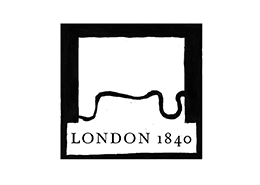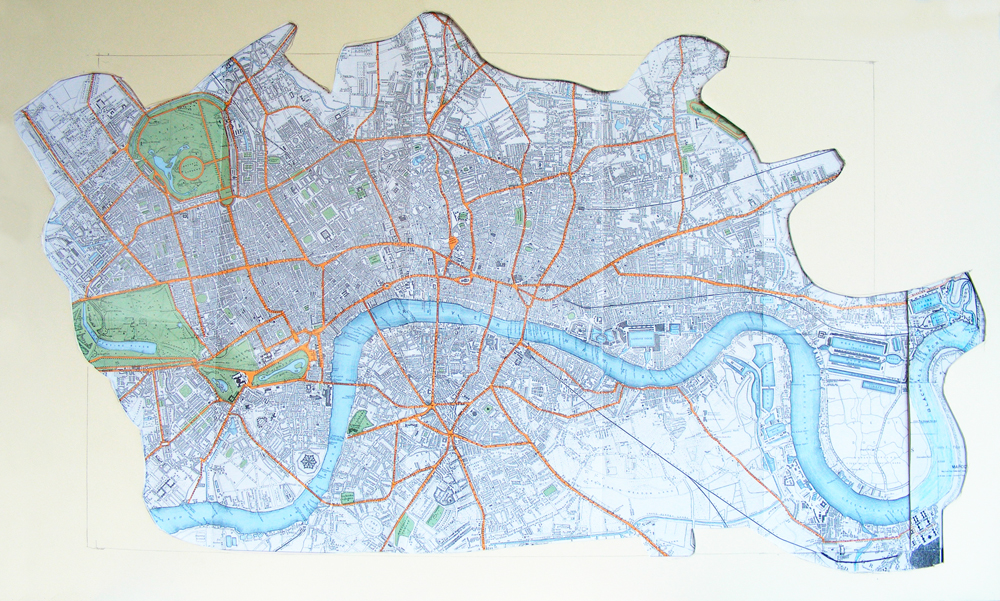By 1840 London had expanded hugely, reinforced its commercial might with the construction of vast new docks and canals, and, from 1835, become the focus of the nascent railway age which at that time had shifted from the provinces to the capital, so that in 1840 London had six railway termini.
The research necessary to build the model will generate a huge amount of digital data which, with further research, will produce almost limitless applications, such as population densities, building dates, poverty mapping, estate boundaries, present-day listed building locations, etc.
The area covered by the model. From St John’s Wood top left to Greenwich bottom right.
In order to promote LONDON 1840, we have built a 1:500 scale model showing part of Bloomsbury. This model is made available for public exhibition.
The 1:500 Bloomsbury model
- 4 December 2013/2 February 2014 – exhibited at English Heritage’s ‘Almost Lost’ Exhibition at the Wellington Arch, Hyde Park Corner, London SW1
- April 2014 – exhibited at The Gallery, 77 Cowcross Street, London EC1M 6EL
- 8 & 9 July 2014 – Exhibited as a pop-up exhibition during the Venice Biennale at Palazzo Arrigoni, Venice with lectures from Venice University Conservation Architecture Department and children’s workshops led by Sir John Soanes recently retired Head of Education Jane Monahan.
- 20 & 21 September 2014 – exhibited at Trinity Buoy Wharf, Orchard Place, London E14, during London Open House weekend
Many thanks to Alan Baxter, Peter Murray at New London Architecture, Dan Cruickshank, Polly Hudson, Billy Dickinson at Central St Martin’s, Eric Reynolds and 1st Framework
Contact: london1840@1stframework.org





